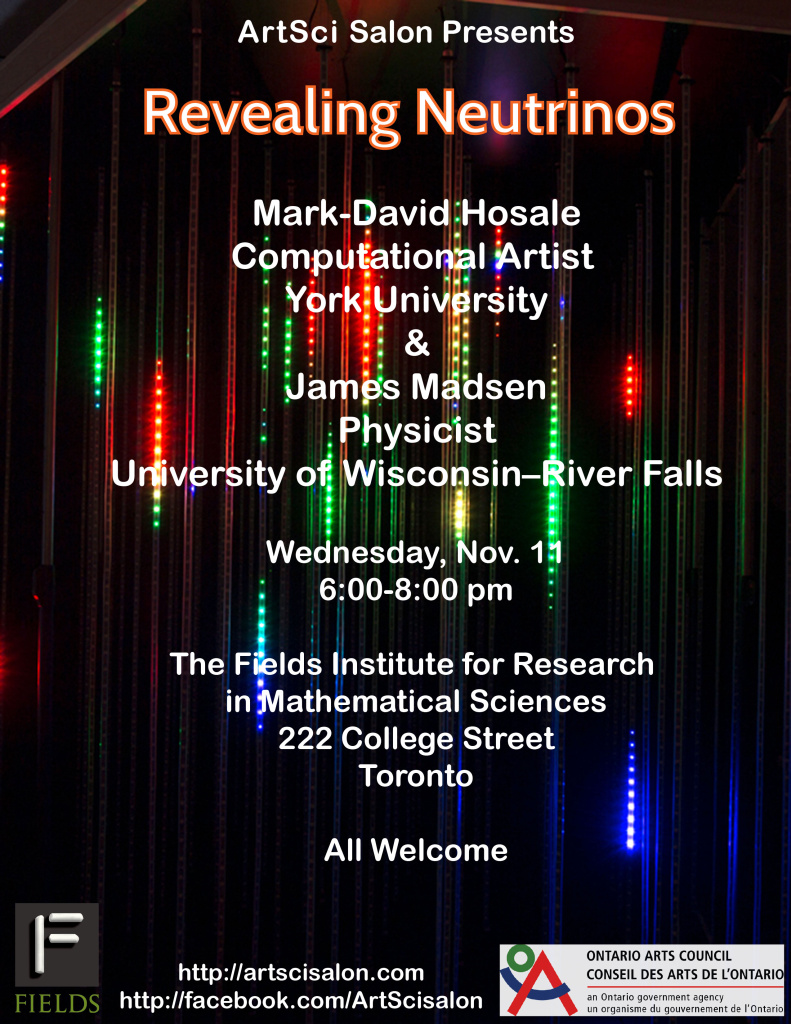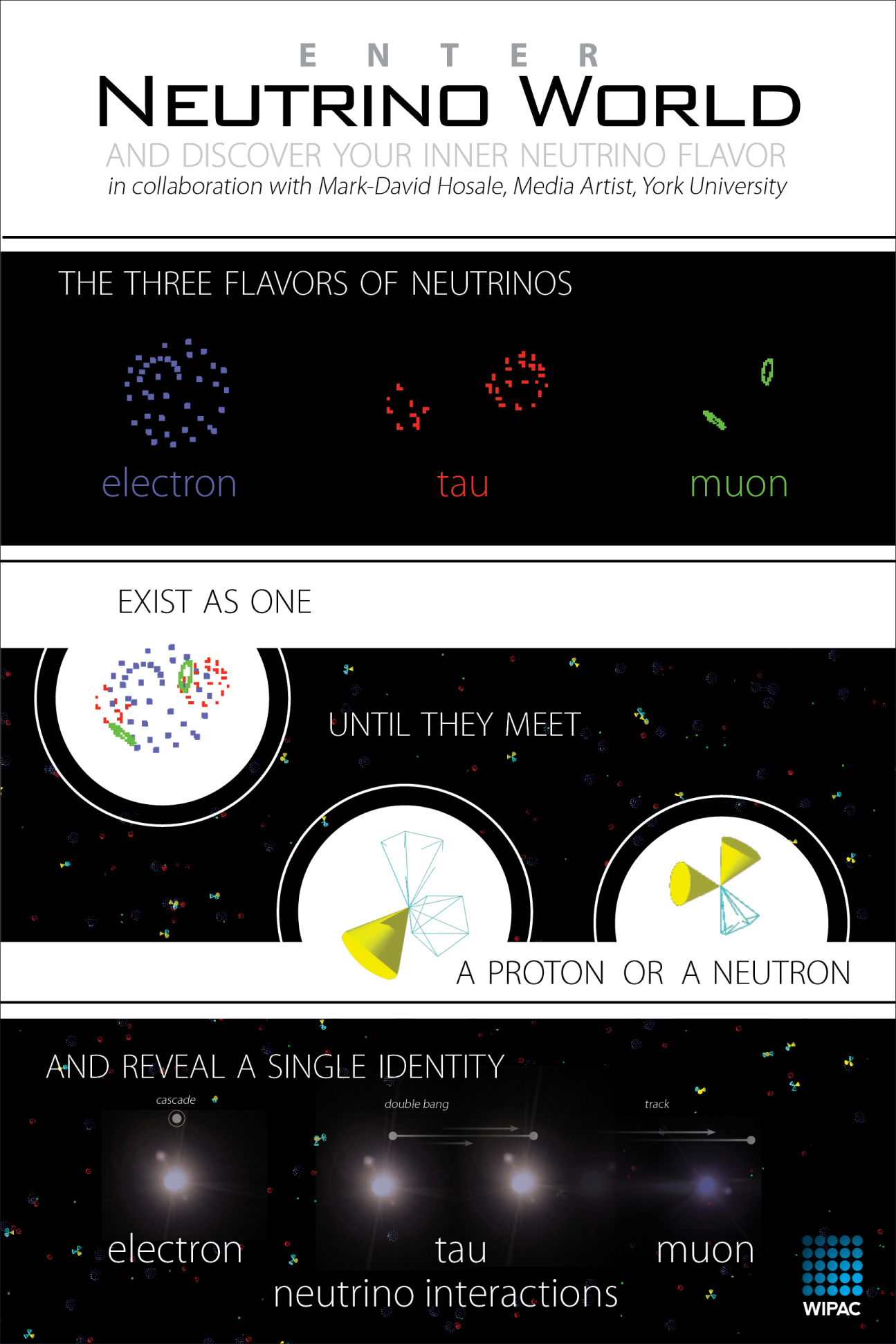Dr. Hosale and Dr. Madsen will discuss the Art/Science processes of collaboration and the challenges in exploring the visualization and sonification of data sets collected at the IceCube Neutrino Observatory, a new type of telescope made from one cubic kilometer of ice starting one and half kilometers below the surface at the South Pole. Hosale and Madsen have been working regularly with each other since 2012 and have realized several projects including Quasar2 and 3, an international art/science panel discussion at Deutsches Museum in Munich, Germany, and a variety of education and outreach projects. Their current work is the product of a collaboration between the Wisconsin IceCube Particle Astrophysics Center and the nD::StudioLab at York University.
with:
Mark-David Hosale Digital Media, School of the Arts, Media, Performance & Design, York University
James Madsen Physics, University of Wisconsin-River Falls
Wednesday, November 11, 2015, 6:00-8:00 pm
Rm 230, The Fields Institute for Research in Mathematical Sciences,
222 College Street, Toronto
 IceCube 8 cubic foot LED volumetric display – Kathy M Helgeson/UW-River Falls
IceCube 8 cubic foot LED volumetric display – Kathy M Helgeson/UW-River Falls
Bios
Mark-David Hosale is an artist and composer who use technology as a means of expression. Mark-David has a Ph.D. in Media Arts and Technology from the University of California. He is an Associate Professor in Digital Media in the School of Arts, Media, Performance, and Design at York University. He has had works exhibited and performed internationally at conferences, universities, and festivals; and has given lectures and taught at institutions in Denmark, The Netherlands, Norway, Canada, and the United States. His research and work explores the boundaries between the virtual and the physical world. Whether as part of an installation or performance work, the virtual spaces he creates are technologically transparent, sophisticated and virtuosic explorations of knowledge, time, and space.
Jim Madsen is the chair of the physics department at the University of Wisconsin–River Falls and an associate director of the IceCube Neutrino Observatory, where he leads the education and outreach team. He has deployed three times to Antarctica, and presented science talks on five continents. He enjoys providing opportunities to participate in astrophysics research that range from one-time talks for general audiences to extended research experiences for teachers and students, including field deployments at the South Pole.
The Labs
Wisconsin IceCube Particle Astrophysics Center (WIPAC)
The Wisconsin IceCube Particle Astrophysics Center, or WIPAC, is a scientific center within the Graduate School of the University of Wisconsin-Madison with faculty based in the Departments of Physics and Astronomy. Until December of 2011, WIPAC was known as the IceCube Research Center. Following construction completion of the IceCube Neutrino Observatory in December 2010, the mission, vision, and name of the center were revised to reflect the shift from IceCube construction to data analysis and encompass a broader range of particle astrophysics research interests. The main goals of the center still revolve around IceCube: maintaining and operating the detector to maximize data output and supporting the international collaboration in multiple ways. Other priorities include recruiting and developing gifted researchers, developing a national education and outreach program, and contributing to the field of particle astrophysics.
nD::StudioLab
Led by Mark-David Hosale, the n-D::StudioLab is a multi-purpose facility designed for the research and development of transmodal artworks based on worldmaking theoretical research based at York University. The n-D::StudioLab is an adaptable space that can accommodate Research-creation activities that include theoretical discourse, methodological development, and the production of works. The common foci of these activities explore questions and produce work in the areas of ArtScience, Media Art, and Interactive Architecture. While a distinction between theory, methods, and making can be helpful for discussion, in practice they are interrelated with the output of one activity being the catalyst of another. Since its inception in October 2011 the n-D::StudioLab has been involved in the research and development of several works that have been shown internationally, and contributed to published research with a number of collaborators.

Comments are closed